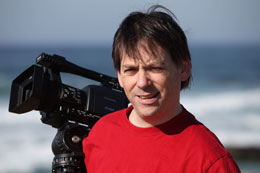
March 1, 2009
Review By Rick Young
Just spent most of the last week shooting with Panasonic's HPX-171. For those unfamiliar with the Panasonic camera range the HPX-171 is the European model, the equivalent of the US model, the HPX-170. This camera shoots DVCPro HD, or standard definition DVCPro, or DV to P2 card. There is no tape drive on the camera, therefore the only option is to record to card. For those want the ability to record to tape, Panasonic also offer the HVX-201A (European model) which is the successor to Panasonic's hugely successful HVX-200.
The HPX-171 is delightfully light. This was my first impression before even switching on the camera. Many camera operators find lightweight cameras a hindrance, needing a substantial amount of weight to balance the camera, however my opinion is that Panasonic have got it just right with this camera.
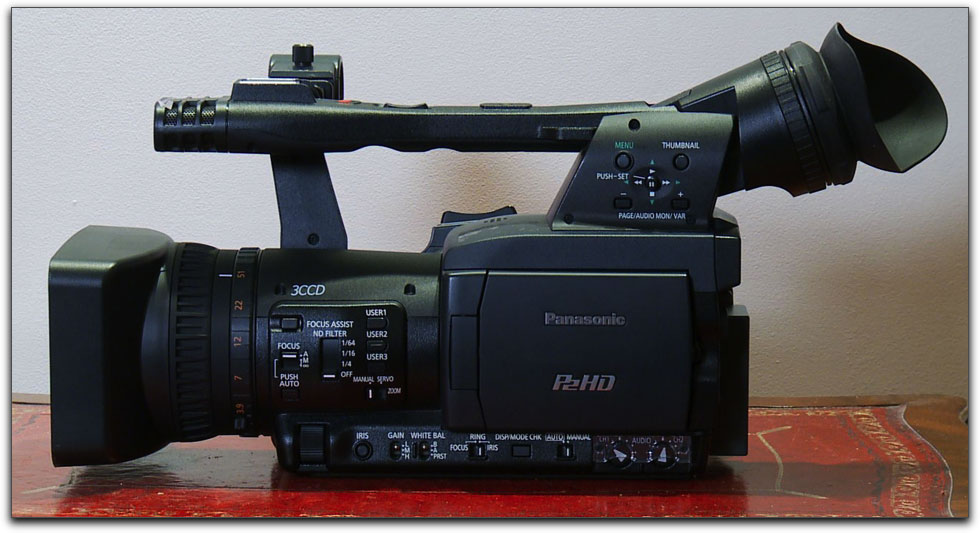
Heavy cameras work great when they are shoulder mounted, The HPX-171 is a hand- held camera, much the same size as other cameras such as the Sony PMW-EX1 or HVR-Z7, or the Canon XH A1 or XH G1 - however, the HPX-171 is substantially lighter than any of these competing models. Light in such a way that one can hold the camera for long periods of time without suffering from arm fatigue. This is a big deal as it made me want to shoot and to continue shooting. Many will consider a multitude of characteristics of a camera, from technical operation to image quality as being paramount - however, for me if a camera makes me want to shoot than this is crucial: the more coverage I can get means the more footage I have to work with in the editing.
Not only does the HPX-171 makes me want to shoot, the lightness and slimness of this model makes it extremely maneuverable - and once again this adds to the flexibility of being able to get the shots you need.
In terms of operation the HPX-171 is very similar to it's predecessor the HVX-200. I used the HVX-200 for a good two weeks when it was released close to three years ago. The HPX-171 represents the evolution of the HVX-200. Not once did I need to look at the instruction manual; I was able to find my way around the menu commands without problems. I have to say this is a very easy camera to use, be it in manual or automatic.
There are several improvements the HPX-171 has over the HVX-200. As mentioned the tape deck is gone, creating the slimmer, lighter body, the lens has been improved and image quality raised. These are not minor improvements - the improvements are significant.
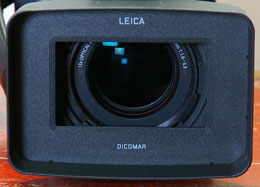
The lens at the wide end is now equivalent to 28mm in 35mm photography terms. Time
and time again I was impressed with being able to get a wider field of view than
competing models. I find, more often than not, that I work at extremes of the lens - as
wide as possible or as long as possible. Many competing models feature a lens over
30mm in 35mm photography terms. To be able to shoot at 28mm makes a big
difference and this would be exaggerated further with the addition of wide angle
attachments.
The image quality has been improved along with low-light performance over the previous model. This is what I was told by Panasonic on launch of the HPX-171 and have verified this with my own tests. The HVX-200 was a breakthrough camera in that it was able to record HD at 100mbps, in a 4:2:2 colour space, however due to the limitations of the camera and sensor, noise would sometimes be noticeable, particularly in the blacks, and in low-light gain was needed with the inevitable result of grain in the image. Both these issues have been significantly reduced - meaning the noise in the image is now significantly less, or non-existent, and the camera performs much better in low-light situations.
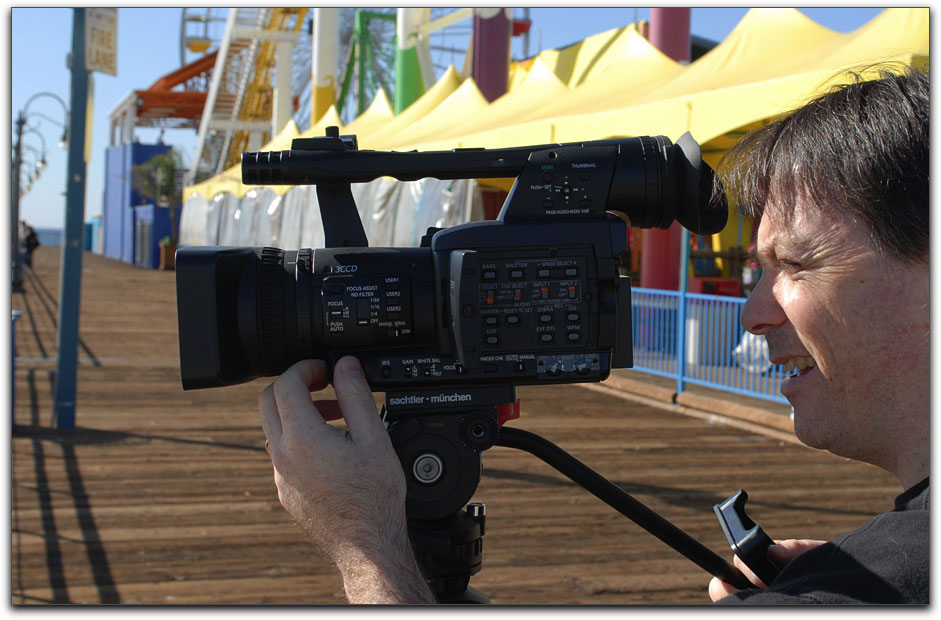
A few killer features which impressed me and I wish were included on every camera I use:
(1) focussing - this camera has the best auto-focus of any camera I have used in this class. I'm talking reliable auto-focus which works so well I found myself trusting it and using it. Some of the other cameras I have used I would never trust in autofocus.
Furthermore, when manually focussing one can press the focus assist button which punches the centre of the image forward in a style like older SLRs, providing a magnified centre image allowing for pinpoint focussing . So in auto or manual focus the camera works great.
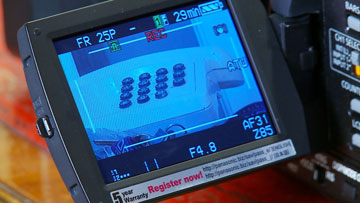
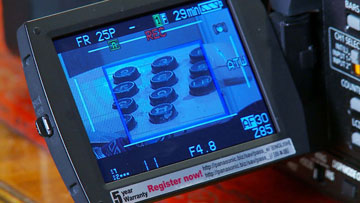
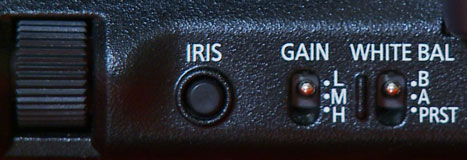 (2) manual iris - the manual iris control is located on the front-left of the camera and is
adjusted via a wheel. This works well but most professional camera operators are used
to this control being on the lens. With the HPX-171 the focussing barrel on the lens can
be made to work, with the flick of a switch, as the iris control. This is a brilliant command
which is both sensitive and accurate. The downside is that focus then becomes
automatic with the benefit being the iris is now controlled by what was the focus ring. As
stated the auto-focus is reliable and trouble-free so I found myself enjoying fine iris
control on the lens and letting the focus take care of itself. Furthermore, the iris/focus
control is electronic - not mechanical, which some camera operators do not like. I found
the electronic controls responsive with the control needed. No hindrance here.
(2) manual iris - the manual iris control is located on the front-left of the camera and is
adjusted via a wheel. This works well but most professional camera operators are used
to this control being on the lens. With the HPX-171 the focussing barrel on the lens can
be made to work, with the flick of a switch, as the iris control. This is a brilliant command
which is both sensitive and accurate. The downside is that focus then becomes
automatic with the benefit being the iris is now controlled by what was the focus ring. As
stated the auto-focus is reliable and trouble-free so I found myself enjoying fine iris
control on the lens and letting the focus take care of itself. Furthermore, the iris/focus
control is electronic - not mechanical, which some camera operators do not like. I found
the electronic controls responsive with the control needed. No hindrance here.
(3) Over cranking/under cranking - this capability was included on the original HVX-200 and has been improved upon. There is now a greater range of frame-rates available in smaller increments to the previous model.
(4) Working with DVCPro HD - all the competing cameras in this class use MPEG as the recording format which is an iFrame way of recording the digital signal whereas the DVCPro HD format is a frame-based codec. This means every frame stands alone and is recorded so that 25 frames make up a second of recorded material. With MPEG a master-frame is recorded into a GOP (group of pictures) and the image is created by referring to the master frame and analyzing the changes which take place to create the video image. Either way can produce good pictures, however, on movement such as pans and quick reframes the DVCPro HD codec holds up very well - the big deal for me, however, is in the editing. I have edited literally hundreds of hours of HDV or XDCAM EX material in Final Cut Pro. The system works, however, it takes time. When editing DVCPro HD the editing is simply fluid and quick to render. This matters as time is always an issue, and when editing to not have to wait makes a big difference. Simply put, editing in the DVCPro HD environment is both painless and a joy to work with.
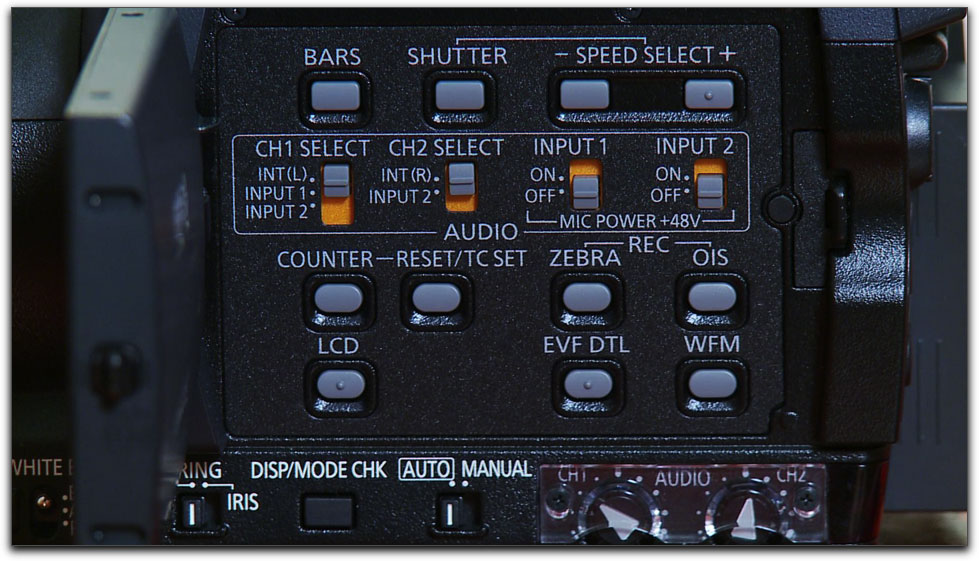
(5) It is possible to switch on various scopes on the camera by pressing the waveform button. This means, in a controlled situation, one can monitor the video signal accurately on a waveform monitor, vectorscope or in histogram view. For myself, when shooting on location I found myself relying on the zebras which can quickly be flicked between 80 and 100%. However, I can see the usefulness of the scopes and can definitely see using these for certain situations.
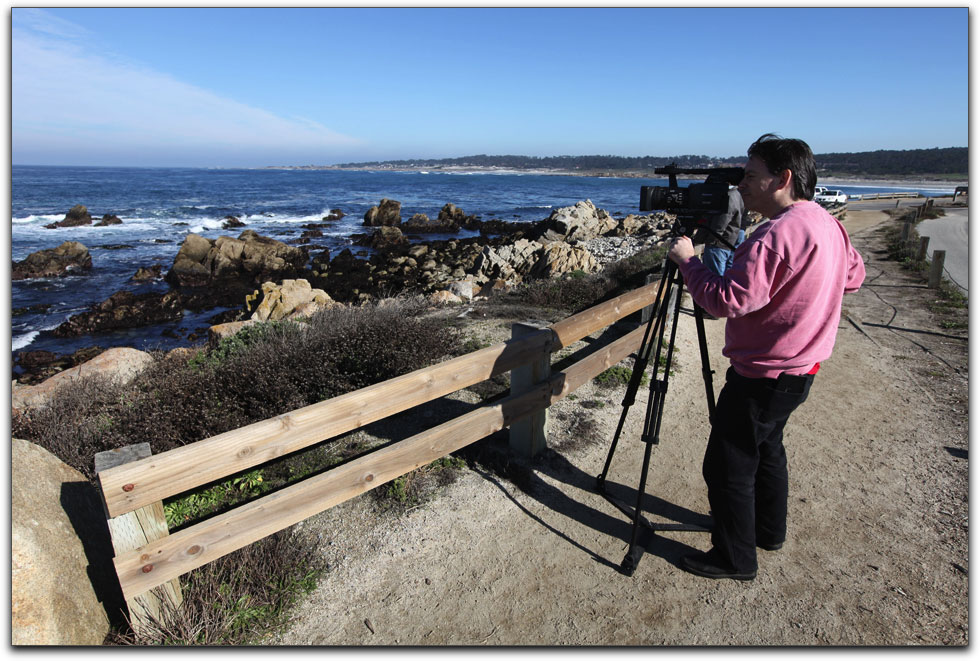
So in summary, the HPX-171 stands out for me as it is easy to shoot with, easy to edit with, and has some killer features which make operation both easy and effective. What I like most is the modular design of the camera. This is an all in one package which is so light and nice to hold, as I said earlier, it just makes me want to shoot. There are no detachable lenses or viewfinder to remove or attach, which means one simply has to switch the camera on and frame the image. The image quality is good - the images have a richness which many Panasonic shooters have grown to love. Shoot at the sweet-spot of the lens which is F4 and this camera produces beautiful images with depth and quality which I love. I'm a fan of many cameras and the HPX-171 is certainly one of them. I'd be happy to shoot with this camera any day.
End note: what matters more than anything is the pictures. Shown below are uncorrected images grabbed straight out of the camera, footage was filmed using the 720 25pn mode of operation. The stills have been reduced in size and Jpegged for this article. You can view Rick Young's video report on this camera at MacVideo.tv.



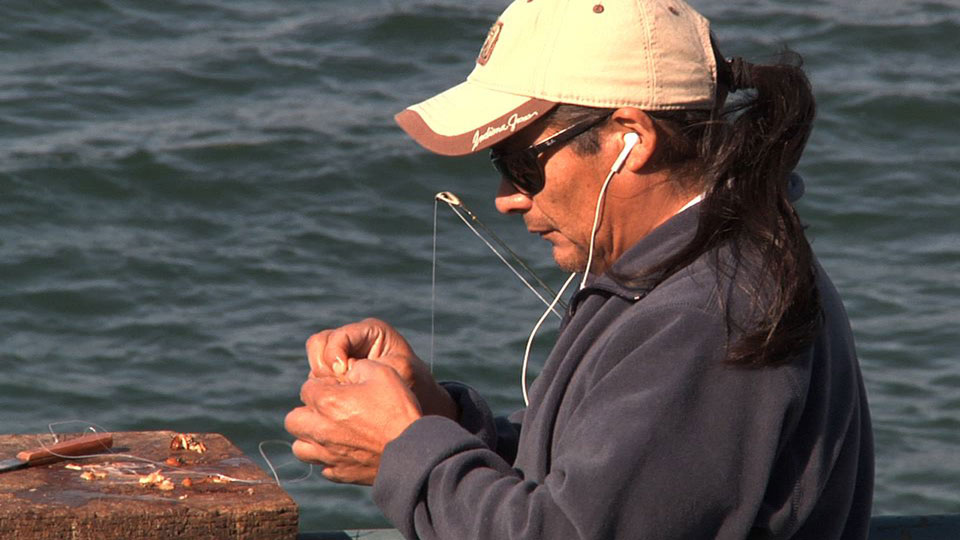






Rick Young is the Editor for MacVideo - a website devoted to post- production on the Mac platform and associated camera technology. Each week MacVideo features a movie of the week and an interview of
the week.